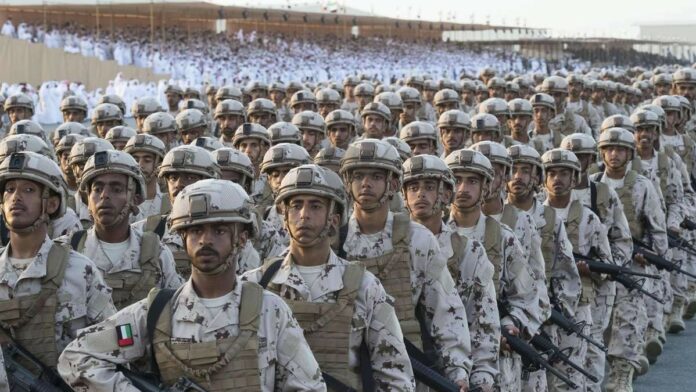The Defense and industrial capabilities of the United Arab Emirates are relatively small – until fairly recently – and represented a nascent industry; only coming into shape in the previous decade as a response to extraneous economic and political factors. The emerging US political consensus of limiting Middle East interventions in conjunction with the ‘pivot to Asia’ of the Obama administration resulted in doubts over the American role as the regional security guarantor amongst the US’s Gulf allies. The policies of the larger Gulf states began to shift accordingly, with the UAE taking an increasingly proactive role regarding its defense, implementing – to a more significant degree – a policy of greater security autonomy. Furthermore, as part of the more comprehensive Abu Dhabi Economic Vision 2030, the UAE views the development of an indigenous defense industry as a vital aspect of its economic diversification project and local employment generation. Thus, with the objectives of achieving greater strategic autonomy, and economic diversification, this paper will analyse the economic and political pressures for autarky, the concessions for efficiency, and the ramifications that the UAE’s approach to Moravicsk’s dilemma has on the structure, conduct, and performance of its defense industry and market.
The UAE government is essentially the sole determinant of the country’s defense industry and market structure, with the UAE bucking the trend of privatisation observed in the last 30 years in Europe. The Industry is best described as a government-owned and funded enterprise with start-up characteristics embedded within the State’s incubator project for economic diversification. The State’s strategy for inducing and enhancing its defense-industrial base can be summarised as intense consolidation, acquisitions, joint ventures, and offset contracts.
In 2014, the UAE merged sixteen companies into the Emirates Defense Industries Corporation (EDIC), making it the country’s largest arms manufacturer and related services provider. Four years later, in 2019, the Tawazun Economic Council, formerly known as “The Office of the Economic Offset Program,” initiated the second major restructuring of the indigenous arms industry: launching the Defense and Security Sectors Development Fund in February and further consolidating Emarati defense firms by combining 25 subsidiaries into EDGE Group, a state-owned private joint stock company in November of that year. This new entity absorbed the former holdings of EDIC and notably only excluded two major Emirati firms: Calidus and Aquila Aerospace. This high consolidation of the Industry into what is essentially a monopoly allows for the UAE firm to boast higher financial strength and more significant opportunities for economies of scale. It enables EDGE Group better to bear the high cost of research and development. This, in turn, compensates the State with reduced unit costs even at the smaller scale of overall production while agglomerating the relatively small pool of skills and levels of experience at the UAE’s disposal. Moravicsk said such consolidation allowed France’s aerospace industry to outpace Britain’s in the early post-war period, despite the latter’s technological advantage. Furthermore, Kagan, Setter, Shefi, and Tishler suggest that concentration into one firm could minimize net defense costs and result in maximal Industry operating profits for a small country. While their study is fixated on the Israeli case study, the qualifications by which the work distinguishes Israel and Singapore – advanced economy, high GNI score, outsized defense budgets, and insistence on greater self-reliance – all apply to the UAE Furthermore, both Israeli and Emirati industries are characterized by a paternalistic involvement of their respective Ministries of Defense.











